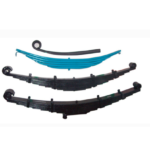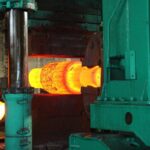Plastic part design is a specialized job and a little different than product design using metals. Five important tips for plastic part product design and engineering will be discussed in this article.
From your car to your computer, you will find the use of plastic parts in almost everything everywhere around you. Most of the plastic parts are manufactured by some type of molding process. As a design engineer, the following five tips will be handy for designing plastic parts:

1. Draft Angle: Draft angle is the slant angle of a plastic part (as shown in the picture above). Providing a proper draft angle is important for the (easy) removal of the plastic part from a mold. Draft angle should be as much as possible.
Standard practice is having a draft angle of 1 to 2 degrees if there are no textures or lettering in the surface. In case of lettering and textures, an additional draft angle of 1.5 degrees per 0.025 mm depth of the texture is recommended.
2. Wall thickness: While designing the plastic parts, design it for the wall as thin as possible. The thicker the wall, the slower the cooling rate and the greater the chance of getting defective plastic parts. If you need a thicker wall, go for it but make sure the wall thickness is uniform throughout the part. In case you cannot avoid uneven wall thickness, then assure gradual changes in the thickness.
3. Radius: Avoid sharp corners in order to minimize stress concentrations and molding defects in the designed plastic part.
The recommended value of radius is at least equal the thickness of the plastic part. And the centre point for the internal and the external radius should coincide. In other words, external radius = internal radius + thickness.
4. Rib: One method of avoiding warpage in plastic part is providing one or more ribs in the design. At the same time, the thickness of ribs should be kept to minimum or it will be subjected to molding defects like shrinkage.
The thickness of the rib should be in between ½ to 1½ times the wall thickness of the plastic part. The height of the rib should be less than three times the thickness of the plastic part. A one degree taper angle is recommended for rib design.
5. Boss: Sometimes you may have to design plastic parts with bosses. Standard practices for designing bosses in your plastic part are:
6. The ratio of the outer diameter to the inner diameter of the boss should be between 2 to 3.
7. The boss wall thickness should be around ½ to 1½ the wall thickness of the plastic part.
8. The height of the supporting gussets for the boss should be around 2/3 the height of the boss itself.
9. The taper angle for the boss should be around 1 degree.
Conclusion
The plastic part design procedure has some similarities with casting design. However, the thickness of casting components is normally higher than that of plastic parts. CAD modeling of the plastic part can be done using ProE or Unigraphics. However specialized CAD packages are also available.


